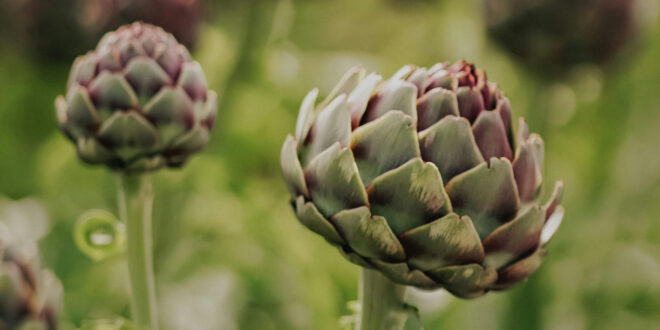Preparing an edible garden each spring or autumn can feel like a daunting proposition, especially as our energy levels wane. Which is why perennial edibles can seem like such a great option. These hardy vegetables return again each spring, with some even wintering over, to provide tasty fresh produce without our having to re-sow or re-plant them. Winter care of edible perennials ensures they are there for us when we need them most. Here’s how to do it:
Runner beans
Many gardeners grow runner (climbing beans) for their tender green pods in spring and early summer, then dig up the roots in late autumn or winter. But runner beans continue to sprout again each spring for 2-3 (or more) productive years. Care for your runner bean plants by allowing the foliage to die off naturally in autumn. After it has, snip off, at ground level, any that remain, and remove as much as possible to avoid it attracting fungus. Gently weed around the base of the plants, then cover any exposed roots with soil. Mulch to suppress further weeds and, in cold climates, to protect the roots from frost and snow.
Sorrel
Garden (edible) varieties of sorrel are clumping herbs with large, tangy, citrus-flavoured leaves that are one of the earliest greens to emerge in spring. In warmer parts of the country, these sorrels will continue growing through the colder months but if leaves are few, don’t harvest them or you will deplete the plant’s energy. In cold regions, sorrel will die right back. When it does, mark the spot with a peg so you don’t accidentally dig it up. Weed around base of the plant, add a 2-3cm layer of compost, and mulch to protect from frosts and snow. If your sorrel is growing in a wet position, dig it up and plant it in a pot or a well-drained location to prevent the root rotting.
Rhubarb
Rhubarb plants will remain productive for many years if given the right treatment. In warmer parts of the country, the plants may continue to produce through the colder season. If they do, harvest sparingly, always leaving at least 3 stems in place to feed the roots. In cold regions, trim the remaining leaves off at ground level (or better still, gently twist them to remove them from the plant). Place a 2-3cm layer of compost around but not over the crown (the exposed section of the plant). Leaving the crown exposed helps the cold to reach the plant – something which stimulates spring growth. Keep a close watch for slugs or snails (and also for possums!) that like to chew at the crowns, and protect where necessary with bait or net.
Globe artichokes
Globe artichokes give double value in the garden – their pretty grey-green foliage is an attractive ornamental, and their ‘choke’ is a tasty delicacy. In warmer climates, cut back yellow foliage, then compost and mulch around the base of the plants. In cold dry climates, follow suit but increase the depth of mulch to 10-15cm. In cold, damp climates, ensure the artichoke plants are grown on a mound of gritty soil, then cover with 10-15cm of airy, light-weight mulch (such as pea straw). Add compost in early spring.
Other garden edible perennials that will serve you well include perennial kale, chives, alpine strawberries, asparagus, perennial rocket, perennial (multiplying) leeks, and miner’s lettuce. Garden centres don’t always stock a wide range of perennial edibles, but they can be found via the internet on ‘food forest’ and ‘permaculture’ sites. Seek them out for a low-key gardening experience!









Join the Discussion
Type out your comment here:
You must be logged in to post a comment.